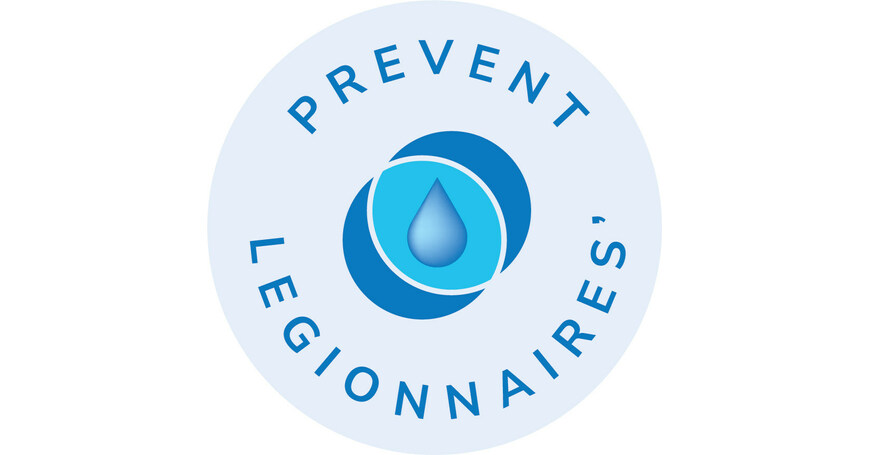WASHINGTON, Aug. 25, 2025 /PRNewswire/ — With the number of confirmed Legionnaires’ Disease cases rising in New York as well as the death toll, it is time for policy makers to address the problem at its source, according to the Alliance to Prevent Legionnaires Disease.
Since July 25, 2025, more than 108 individuals have been diagnosed with Legionnaires’ disease in Central Harlem. Tragically, six individuals have died. Legionnaires’ disease, a severe form of pneumonia, is caused by the waterborne bacteria legionella found naturally in source water and soil. If not properly treated and filtered, legionella can escape water treatment plants, entering water distribution systems, and ultimately infecting building, facility, and home water systems where humans can become exposed. Proactive and comprehensive measures must be taken to address legionella from source-to-tap if we are going to succeed in preventing the serious disease it causes.
“The current policies are not working,” said Bob Bowcock, Alliance Board Member and water expert who founded Integrated Resource Management. “What is needed is a comprehensive approach that recognizes the waterborne pathogens infiltrate homes and buildings through the water supply. Focusing only on end use is only going to lead to more outbreaks and more deaths.”
Local Law 77 passed a decade ago, mandates registration, inspection, cleaning, disinfection, and testing of certain water-using equipment in buildings. However, despite these measures, the city continues to face elevated cases and outbreaks that remain unabated, impacting economically disadvantaged areas the most. The singular emphasis on end-user equipment is reactionary once the bacteria has already entered premise plumbing systems rather than a comprehensive or preventative water-quality strategy.
In a recent op-ed in the New York Daily News (https://www.nydailynews.com/2025/08/24/erin-brockovich-harlem-legionnaires-disease-demands-real-action/), environmental activist Erin Brockovich wrote: “We need to move from reaction to prevention, and that means covering the whole water system from source to tap. New Jersey recently passed a law to require water management programs for both water utilities and buildings, stronger investigations, public education, and case tracking. Illinois has similar rules to mitigate risks upstream…Even the NYS Department of Health has issued a guide to reduce risk of exposure to Legionella bacteria at home and I couldn’t agree more that the public deserves far greater education, awareness and transparency related to this disease and the waterborne bacteria that causes it.”
Further, numerous studies[i] have found a clear link between periods of heavy rainfall and an increased risk of contracting Legionnaires’ disease. Intense rain creates environmental conditions that support the growth and spread of legionella bacteria. On July 14, New York City experienced heavy rain and flash flooding, with Mayor Eric Adams reporting that Harlem experienced some of the heaviest rainfall during the event. The City’s Department of Environmental Protection called it one of the most intense rainstorms since Hurricane Ida. Given the well-documented connection between rainfall and Legionnaires’ cases, New York City should carefully examine the likelihood that this storm disrupted the water distribution system by dislodging and dispersing legionella bacteria, contributing to the current outbreak with cases first diagnosed 11 days after (incubation period for Legionnaires’ disease is 10-14 days).
“This disease is preventable,” Bowcock said. “But prevention begins at the water source and distribution system through proactive monitoring, management, and treatment to prevent the spread of the bacteria as water moves through the system to the end user. It is time to stop pretending that legionella bacteria magically fly through the air. It is spread through water and so logically the way to stop it is in the source of our water. The Alliance to Prevent Legionnaires’ Disease calls on New York to look to the recent actions taken by its neighbors in New Jersey who passed a comprehensive, source-to-tap law for Legionnaires’ disease prevention which takes effect in May 2026, and craft a workable policy that will stop these outbreaks and protect New York residents.”
The CDC reports that there are more than 8,000 cases of Legionnaires’ disease reported annually, with individual cases comprising 96% and outbreaks accounting for only 4%. One in ten individuals who contract Legionnaires’ disease will die from it and the fatality rate is higher among more susceptible populations.
The Alliance to Prevent Legionnaire’ Disease is a national nonprofit focused on preventing Legionnaires’ disease through education, advocacy, and awareness. For more information, visit the Alliance’s website: https://preventlegionnaires.org/.
[i] Hicks LA, Rose CE Jr, Fields BS, Drees ML, Engel JP, Jenkins PR, Rouse BS, Blythe D, Khalifah AP, Feikin DR, Whitney CG. Increased rainfall is associated with increased risk for legionellosis. Journal of Infectious Diseases. 2007.
Chen N-T, Chen M-J, Guo C-Y, Chen K-T, Su H-J. Precipitation increases the occurrence of sporadic Legionnaires’ disease in Taiwan. Scientific Reports. 2020.
Garcia-Vidal C, Labori M, Viasus D, Simonetti A, Garcia-Somoza D, Dorca J, Gudiol F, Carratalà J. Rainfall is a risk factor for sporadic cases of Legionella pneumophila pneumonia. PLoS ONE. 2013.
For more information, visit the Alliance’s website: https://preventlegionnaires.org/
SOURCE Prevent Legionnaires’
